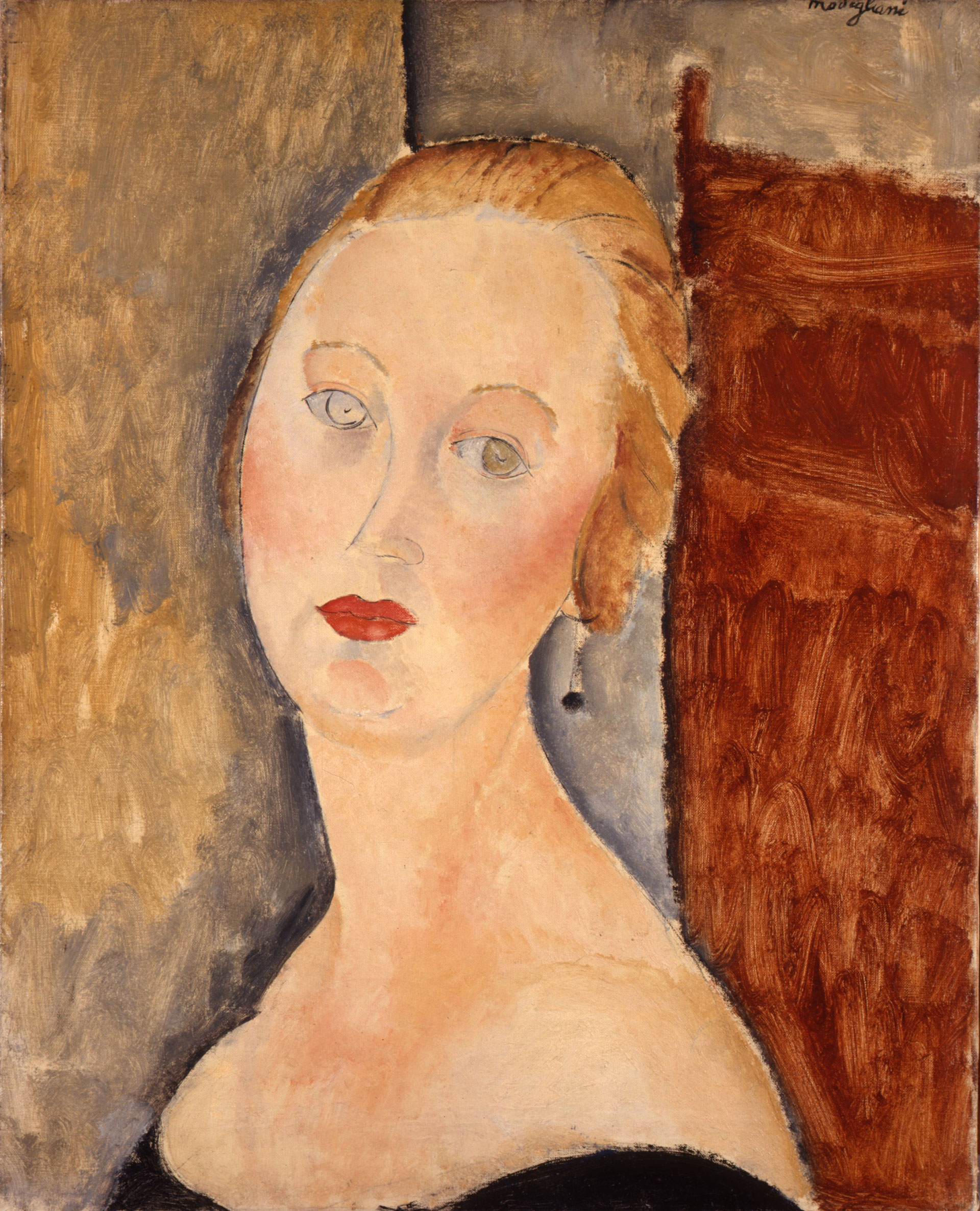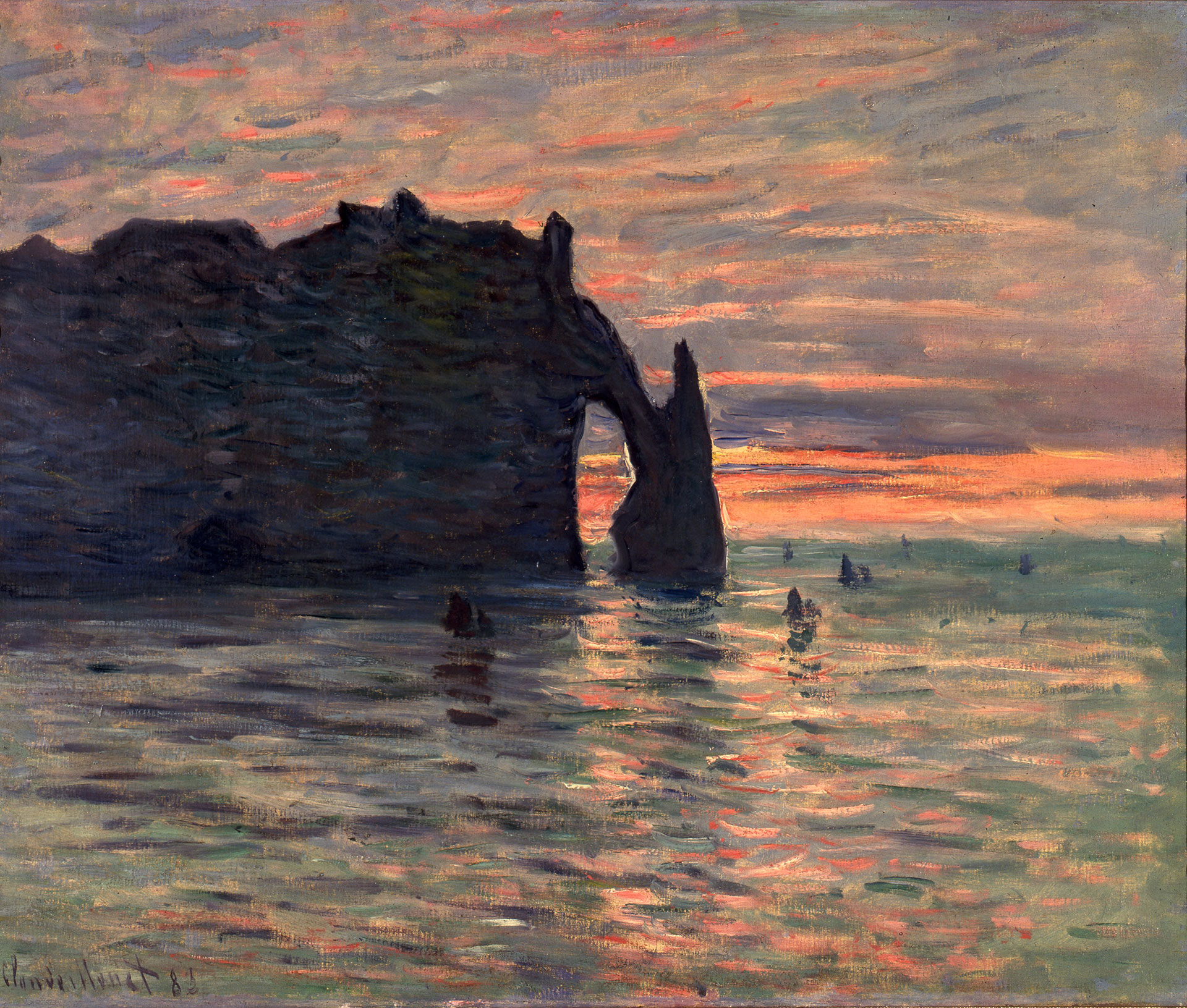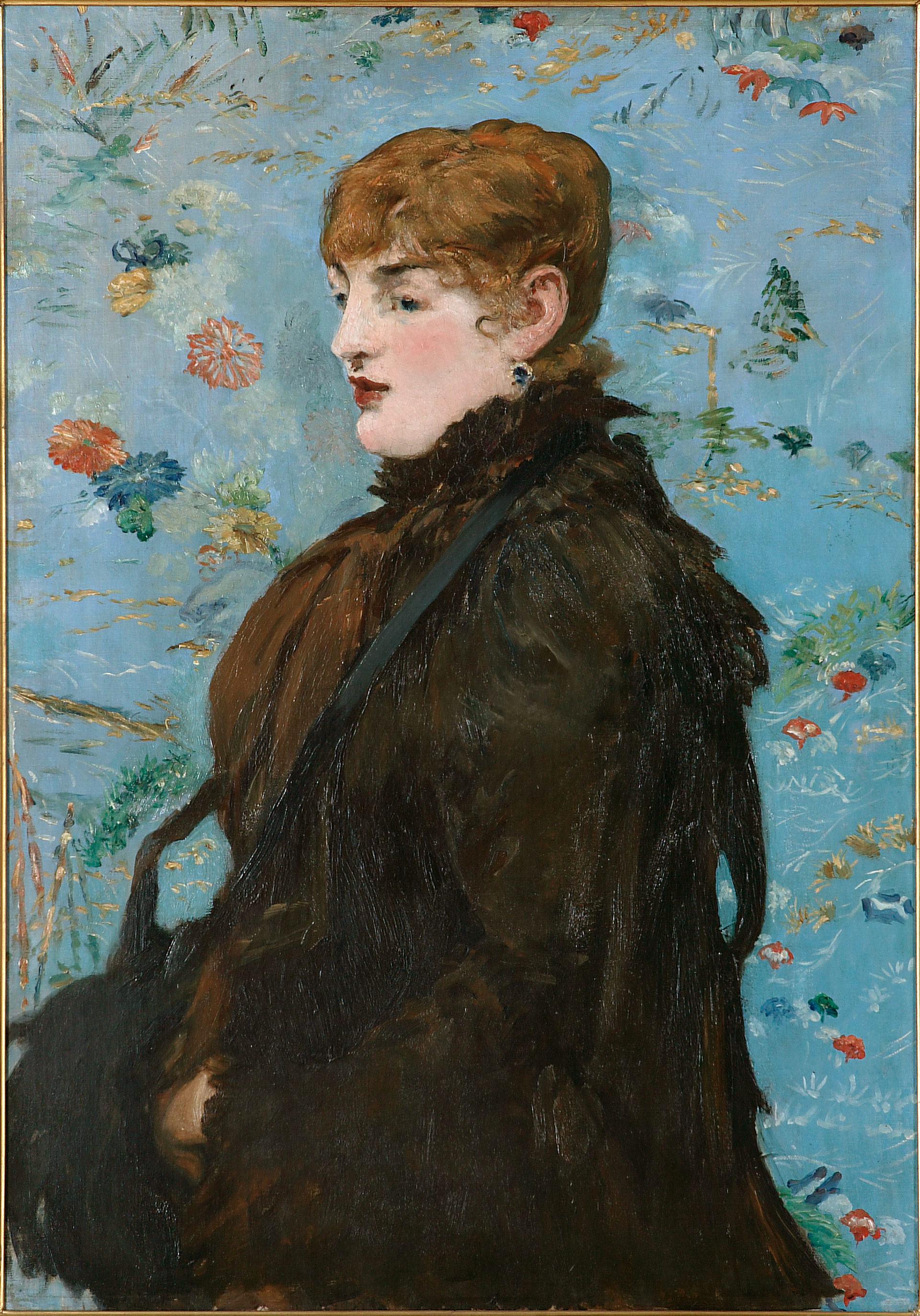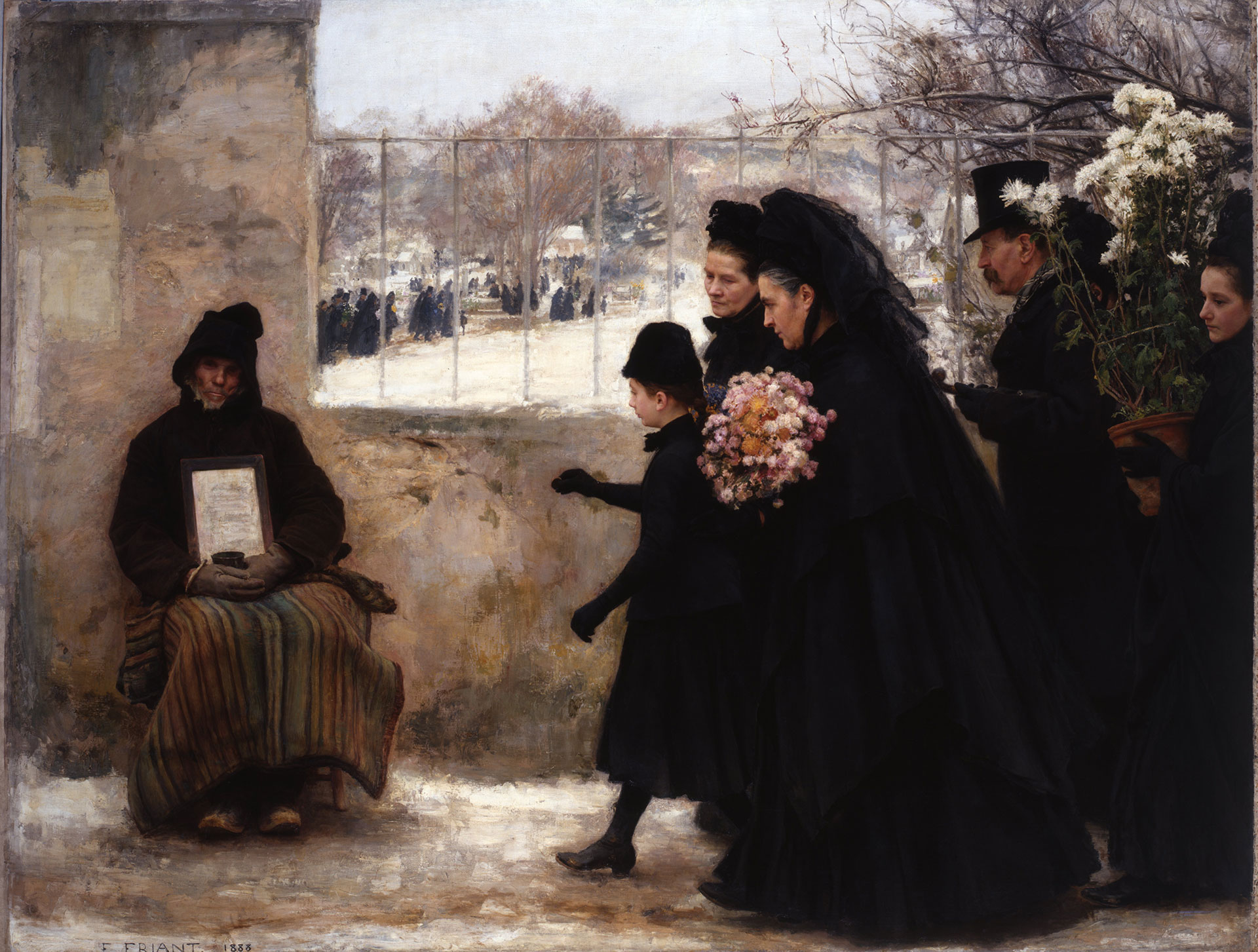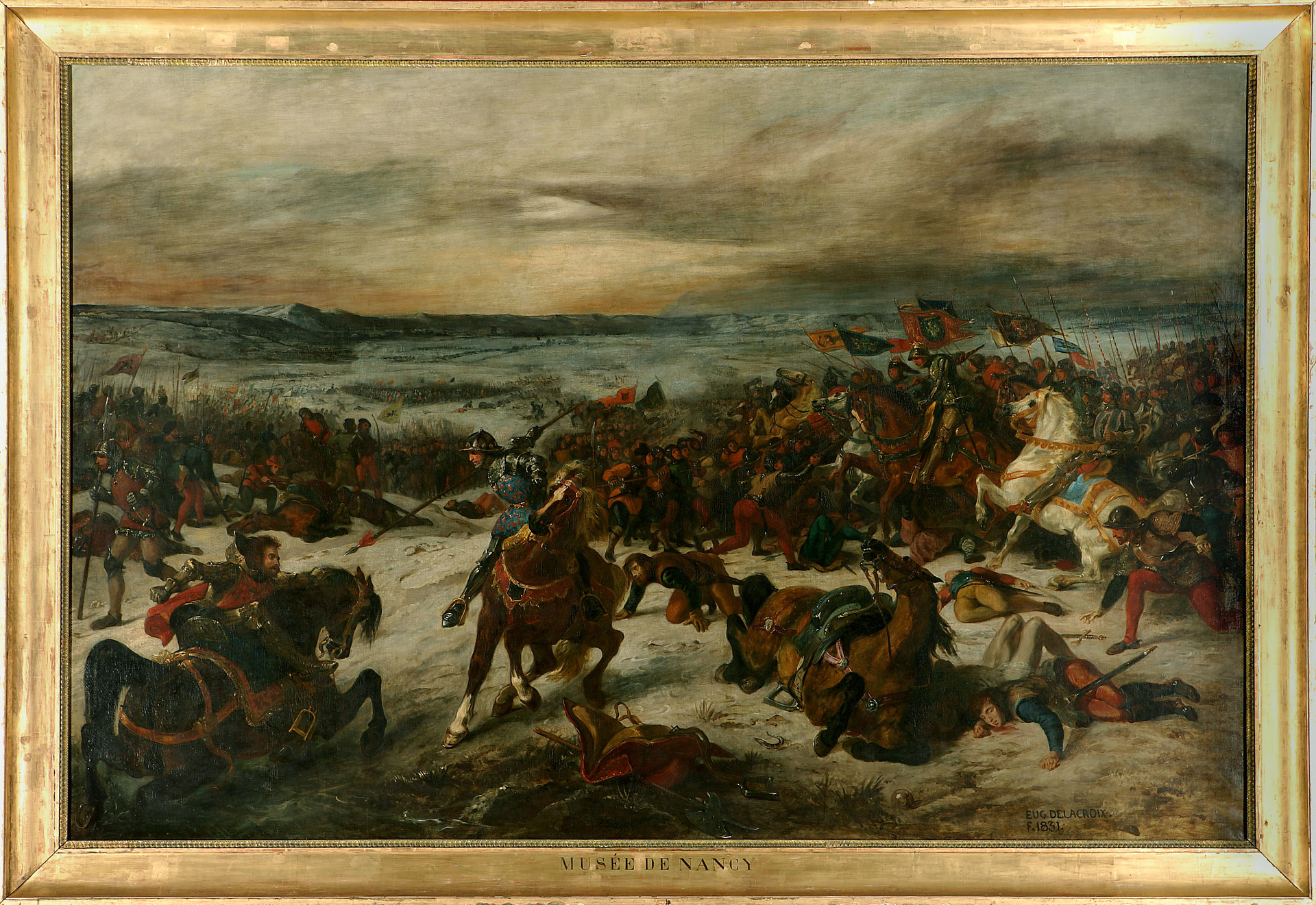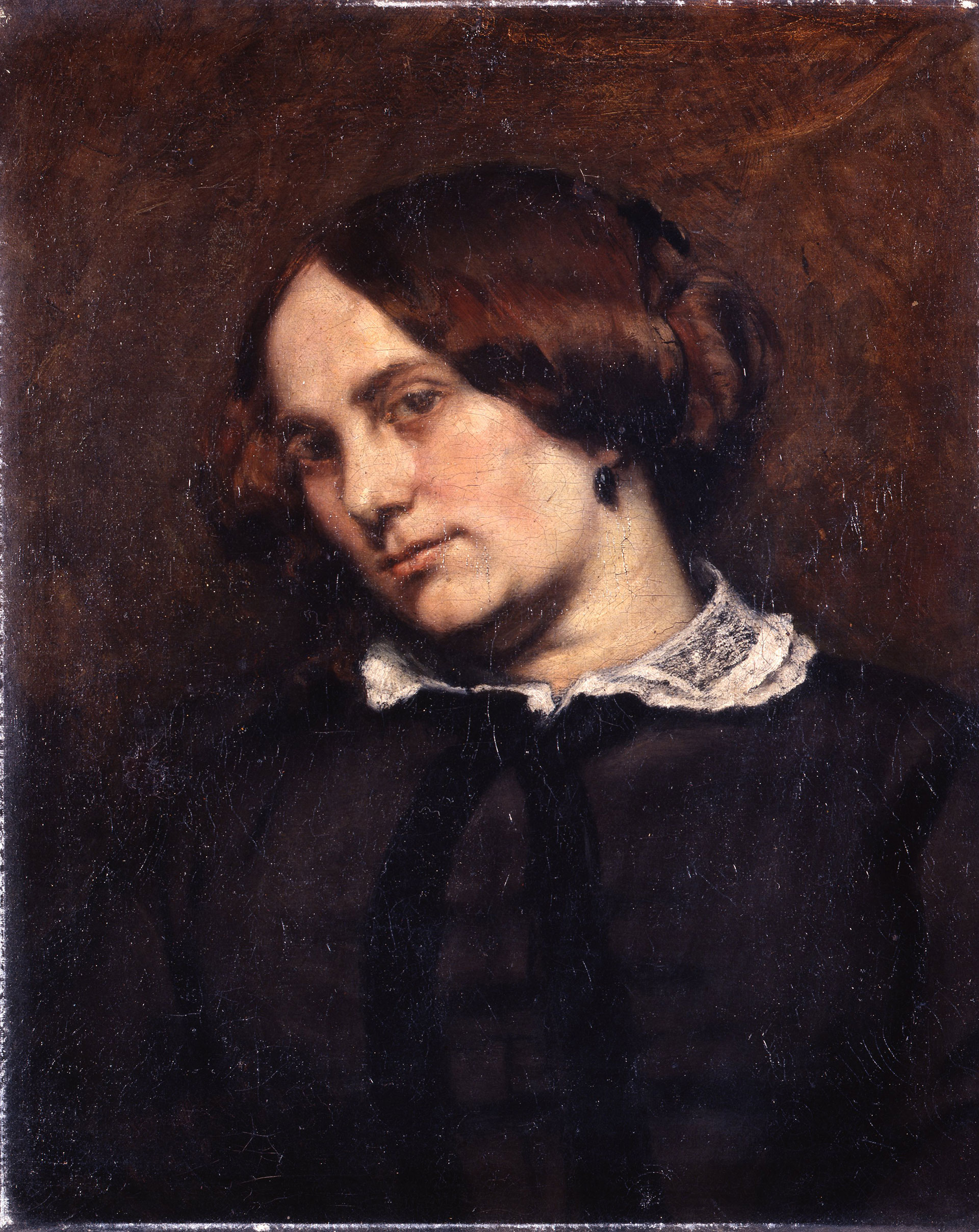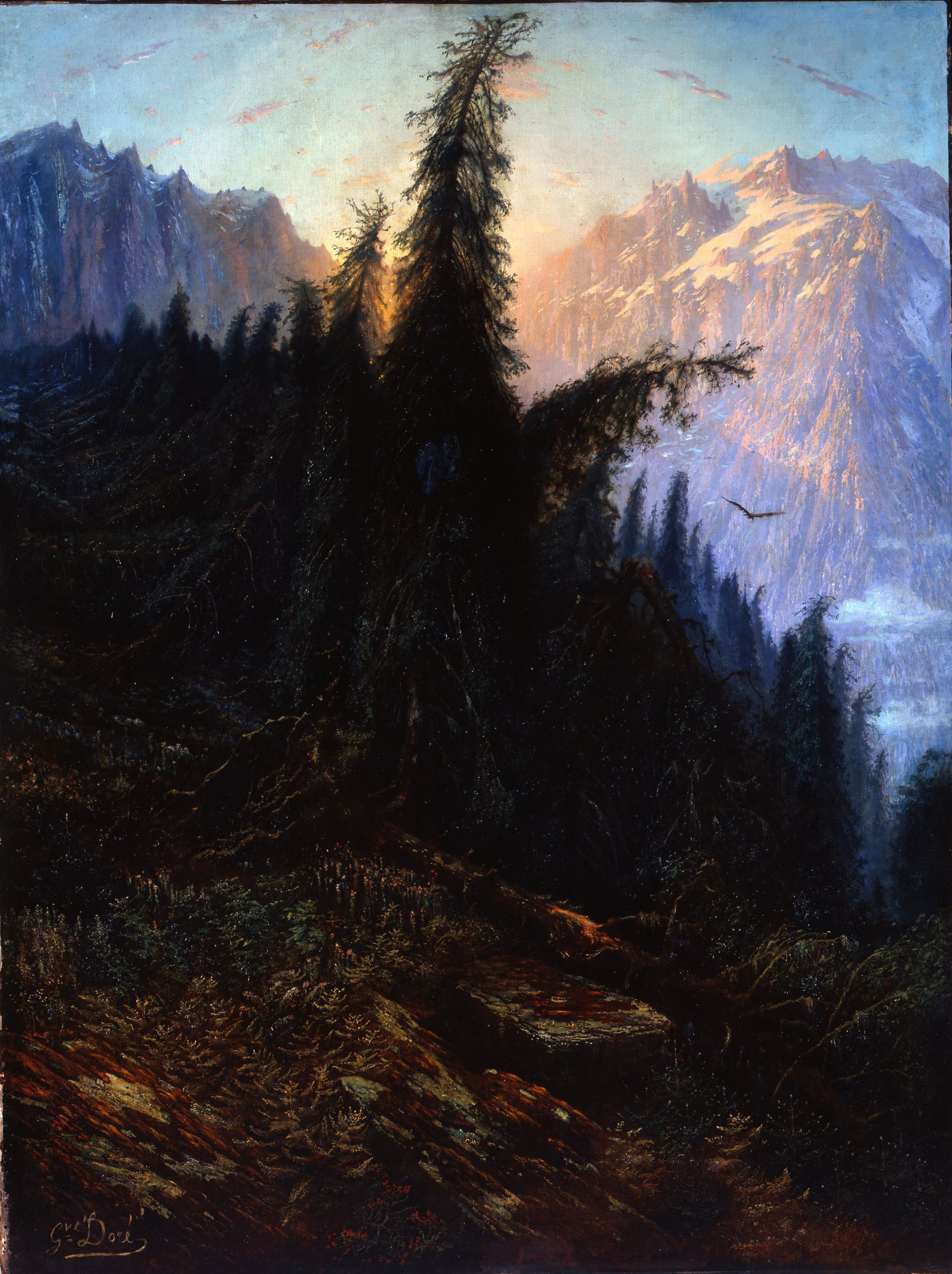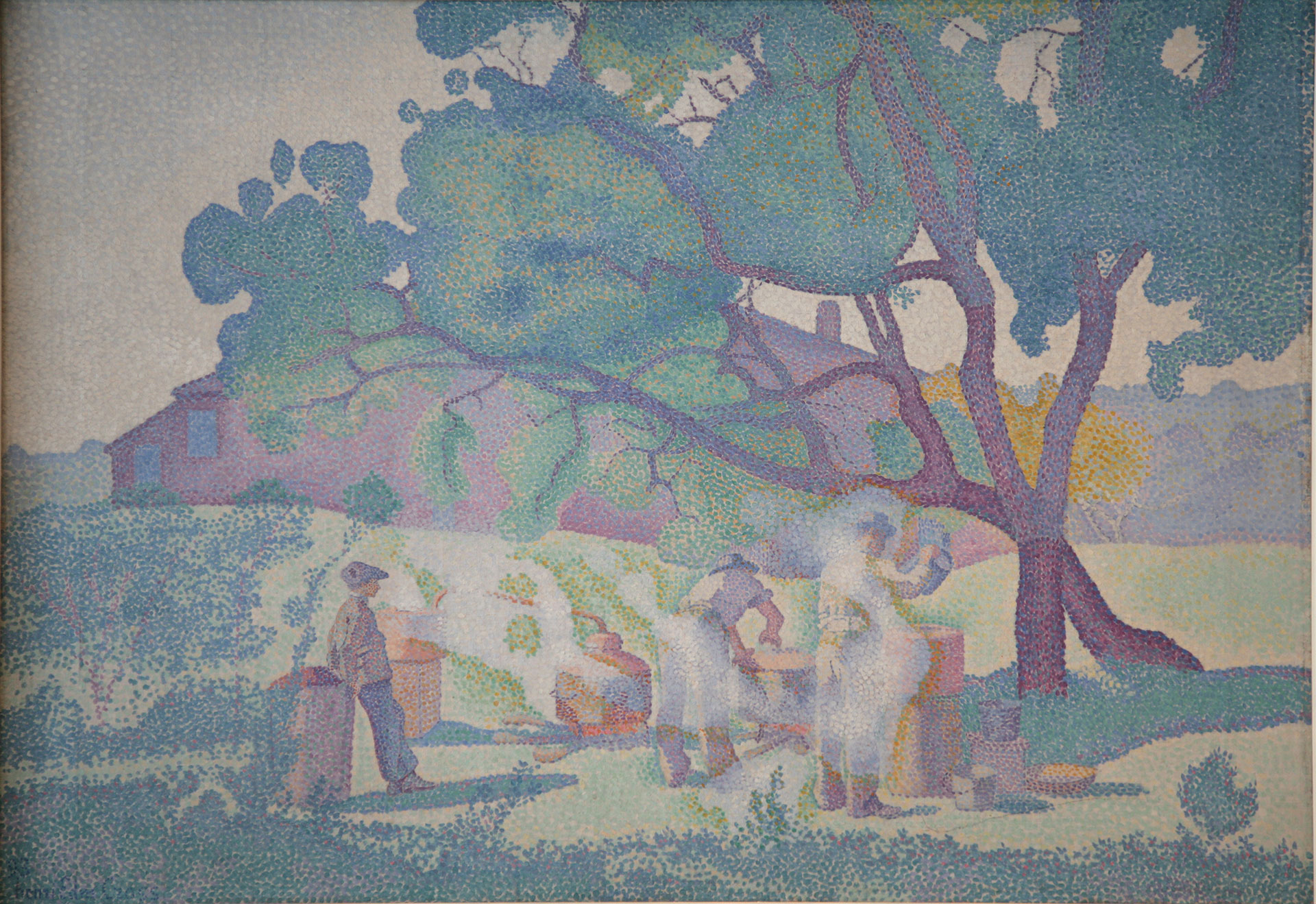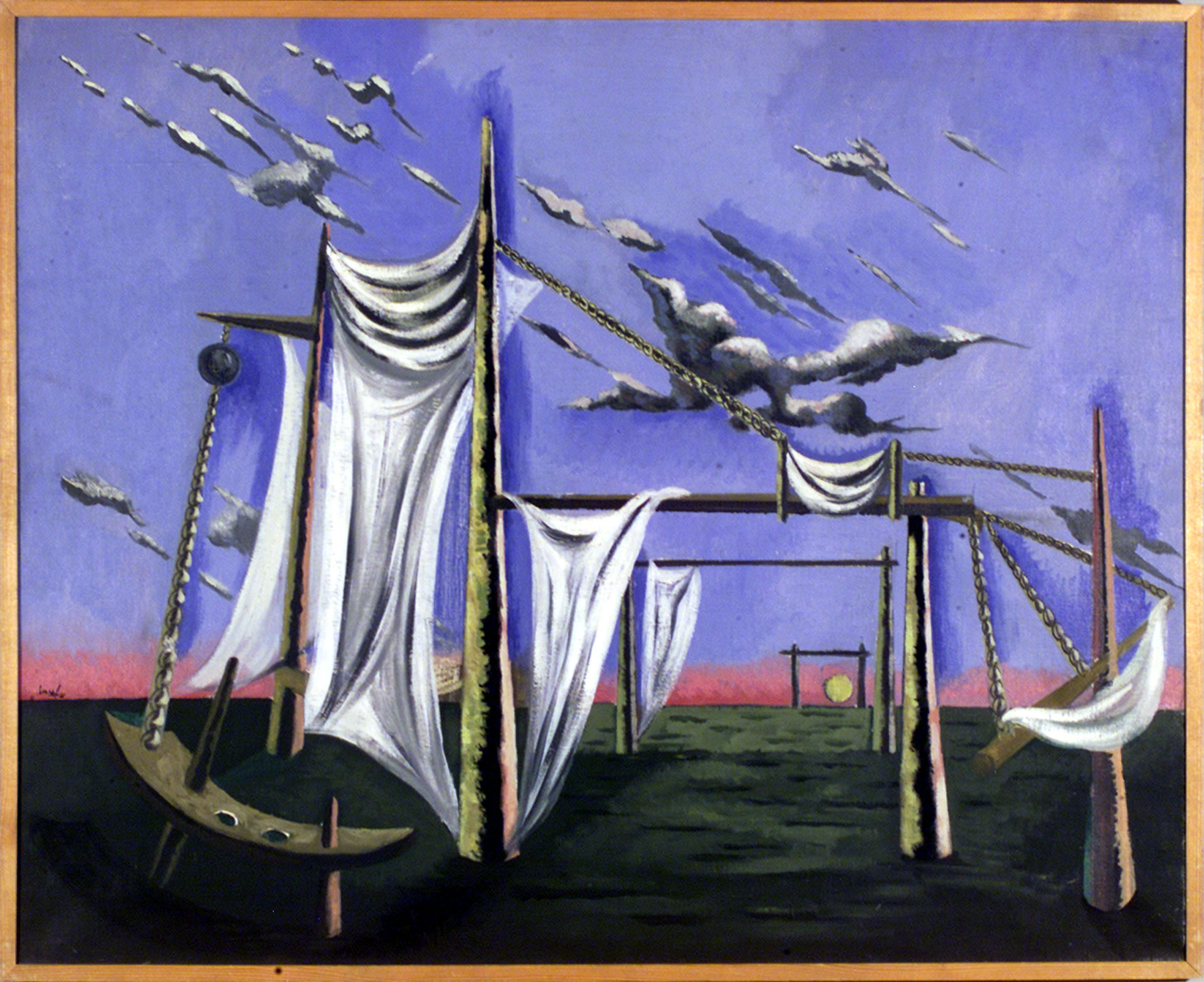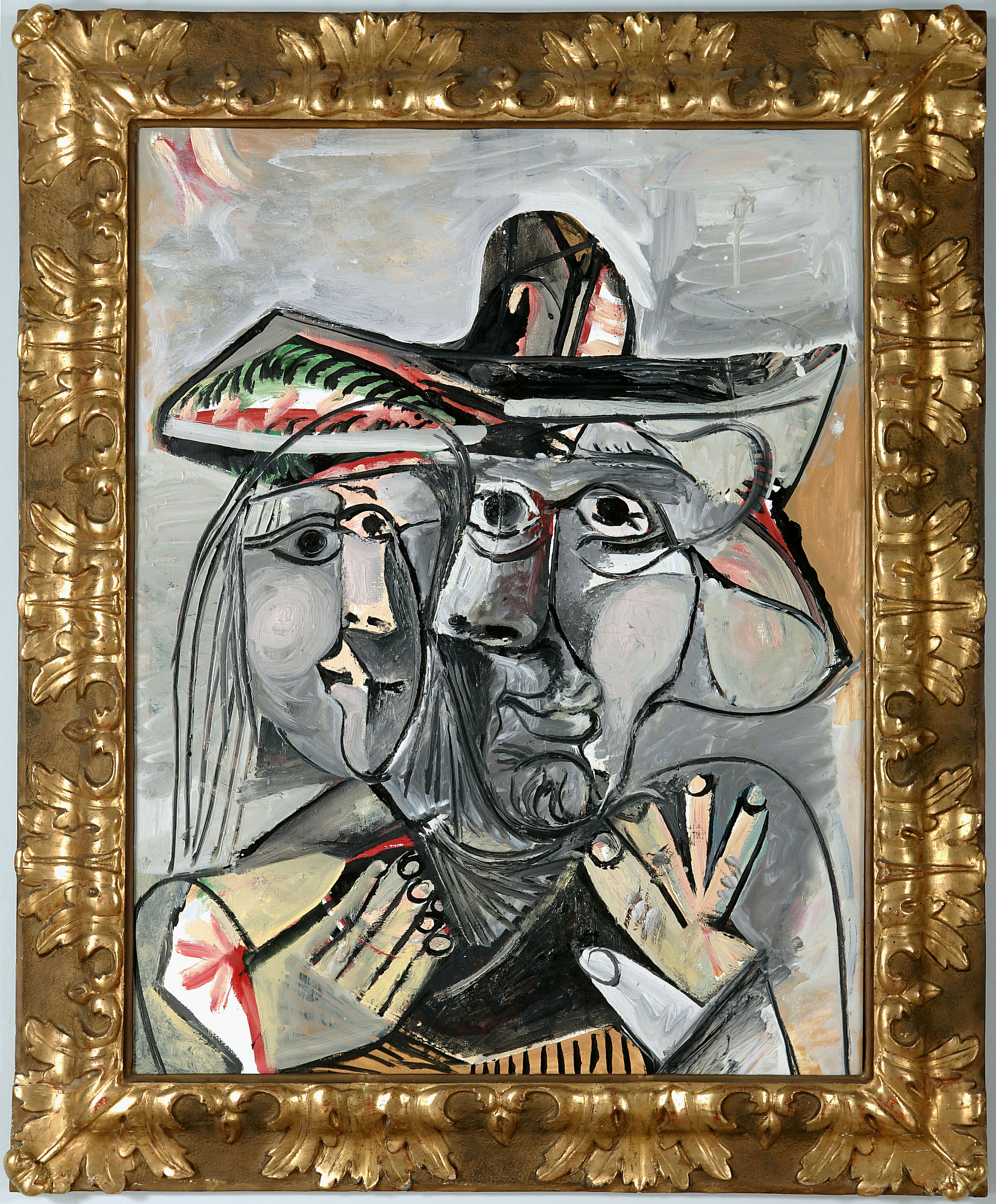19th and 20th Century painting
From Eugène Delacroix to Lucian Freud, a real overview of the different painting movements of the 19th and 20th Centuries.
A masterpiece of Romanticism, The Battle of Nancy (1831) by Eugène Delacroix is one of the leading works in the Nancy collections. The View of the town and port of Dieppe by Eugène Isabey (1842) and the spectacular Mountain Landscape by Gustave Doré (1870) provide a link to the symbolist paintings of Henri-Léopold Lévy. The striking, Dantean visions which emerge from it echo Victor Prouvé’s “Les Voluptueux” (1889). The realism and naturalism of the period 1850 to 1900 are represented by Gustave Courbet (Portrait of Zélia, 1853-1855), Jules-Bastien Lepage (Ophelia, 1881) and Émile Friant (All Saints’ Day, The Lovers). Autumn by Édouard Manet (1882) and Sunset at Etretat by Claude Monet (1883) are some of the Impressionist masterpieces. Following on are the Neo-Impressionist paintings by Henri-Édmond Cross (The Farm, morning, 1893) and Hippolyte Petitjean (Young woman, seated 1892).
The modern painting collection provides a view of the different currents in the early 20th Century. Among these, the Nabis movement in which we find Paul Sérusier (two Breton landscapes, 1906),Pierre Bonnard(The Lunch of the Little Ones, 1887), Édouard Vuillard (The Engraver Vallotton in his workshop, 1902), Félix Vallotton (Honfleur in the mist, 1911), along with several decorative paintings by Maurice Denis and Ker-Xavier Roussel. Next come the Fauves, with Henri Matisse (Marguerite Matisse, c. 1921), Frantisek Kupka (The Bather, 1906-1909), Albert Marquet (The Seine at the Pont Neuf, Fog Effect, 1906), Othon Friesz, Max Pechstein and Raoul Dufy (Three bathers, 1919). The exhibition continues with several depictions of cosmopolitan Montparnasse in the pre-war years, such as Amédéo Modigliani (Portrait of Germaine Survage, 1918), Suzanne Valadon (Casting the net, 1914) and Léonard Foujita(My home, still life with an accordion, 1922). The Cubist collections include the paintings of Pablo Picasso(Man and woman, 1971), Juan Gris and Albert Gleizes. Finally, the works of Jean Lurçat (The Sails, 1931), Francis Gruber (Tribute to Jacques Callot, 1942), Jean Hélion (Pegeen in his workshop, 1954) and Lucian Freud show the different forms of expressionist realism that were pursued in the second half of the 20th Century.
The collections from this period have been formed through the generosity of some major donators, such as Henri Galilée (1965) and through the support of the national museums who have left these major works, such as All Saints’ Day by Émile Friant, on deposit.

